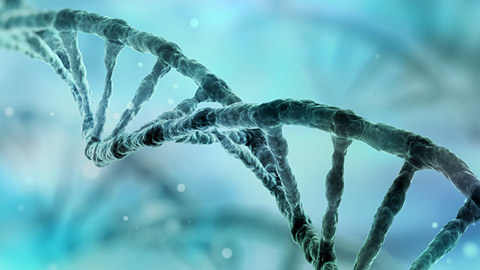Nature meets nurture in the field of epigenetics

The epigenome is a recently discovered aspect of our genetic material that few people have heard about. So what is it, exactly? The National Human Genome Research Institute provides the following definition:
“The epigenome is a multitude of chemical compounds that can tell the genome what to do. The human genome is the complete assembly of DNA (deoxyribonucleic acid)-about 3 billion base pairs - that makes each individual unique. DNA holds the instructions for building the proteins that carry out a variety of functions in a cell. The epigenome is made up of chemical compounds and proteins that can attach to DNA and direct such actions as turning genes on or off, controlling the production of proteins in particular cells.
When epigenomic compounds attach to DNA and modify its function, they are said to have "marked" the genome. These marks do not change the sequence of the DNA. Rather, they change the way cells use the DNA's instructions. The marks are sometimes passed on from cell to cell as cells divide. They also can be passed down from one generation to the next.” (National Human Genome Research Institute, What is the epigenome? para. 1-2)
What do epigenetic markers (aka epi-marks) have to do with sexual orientation? As a 2015 article in the online journal Nature explains, epi-marks affect “how genes are expressed, but not the information they contain” (Reardon, 2015, para. 3). They can be inherited, but they can “also be altered by environmental factors such as smoking, and are not always shared by identical twins” (Reardon, 2015, para. 3).
Scientists believe epi-marks are a promising field of study that could help explain a variety of phenomena, including why not all identical twins share the same sexual orientation. Since epi-marks can change throughout a person’s lifetime, they also might provide a link between nature and nurture.
Researchers caution that the study of epigenetics is in its infancy. Much more research will need to be done for scientists to understand the significance for epigenetic markers for the development of sexual orientation.
Featured Content
Read an engaging overview of key work on epigenetics and sexual orientation from the online journal Nature (2015).
Epigenetic 'tags' linked to homosexuality in men
References:
Epigenomics fact sheet. (2016, April 1). National Human Genome Research Institute. https://www.genome.gov/27532724/epigenomics-fact-sheet/
Reardon, S. (2015, October 8). Epigenetic 'tags' linked to homosexuality in men. Nature. http://www.nature.com/news/epigenetic-tags-linked-to-homosexuality-in-men-1.18530
Rice, W.R., Friberg, U., & Gavrilets, S. (2012). Homosexuality as a consequence of epigenetically canalized sexual development. The Quarterly Review of Biology, 87(4), 343-368. http://www.tiem.utk.edu/~gavrila/papers/h2.pdf
Dee
Who is Dee?
Gender Identity
 Our core sense of who we are as a man, a woman, a mixture of both, or neither.
Our core sense of who we are as a man, a woman, a mixture of both, or neither.
Gender Expression
 How we show up in the world through choices like clothing, hair style, mannerisms or tone of voice.
How we show up in the world through choices like clothing, hair style, mannerisms or tone of voice.
Attraction
 How we feel toward others sexually, romantically and/or emotionally.
How we feel toward others sexually, romantically and/or emotionally.
Biological Sex
 Physical attributes such as reproductive organs and genitalia, chromosomes, genes and hormone levels.
Physical attributes such as reproductive organs and genitalia, chromosomes, genes and hormone levels.
Explore More
Want to dig deeper? Read an in-depth academic article and learn more about the research summarized here, concerning the role of “epi-marks” in shaping same-sex attraction.
